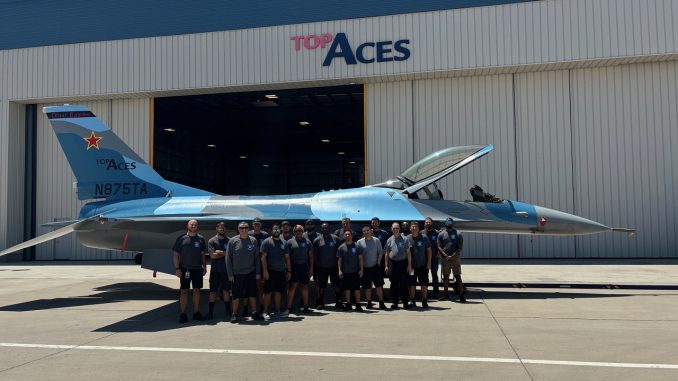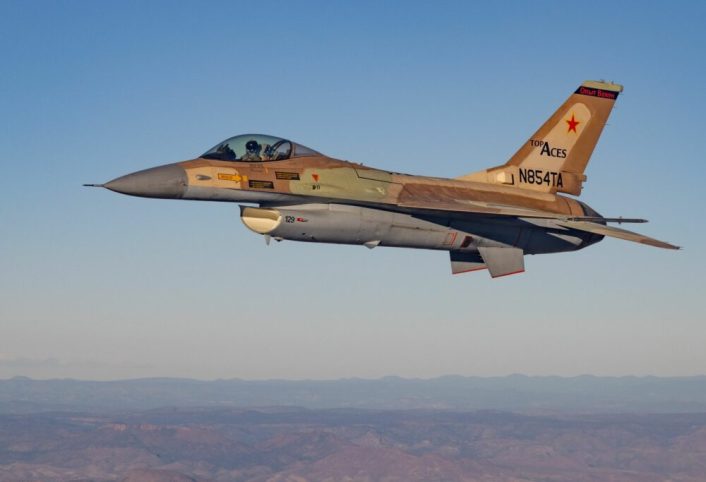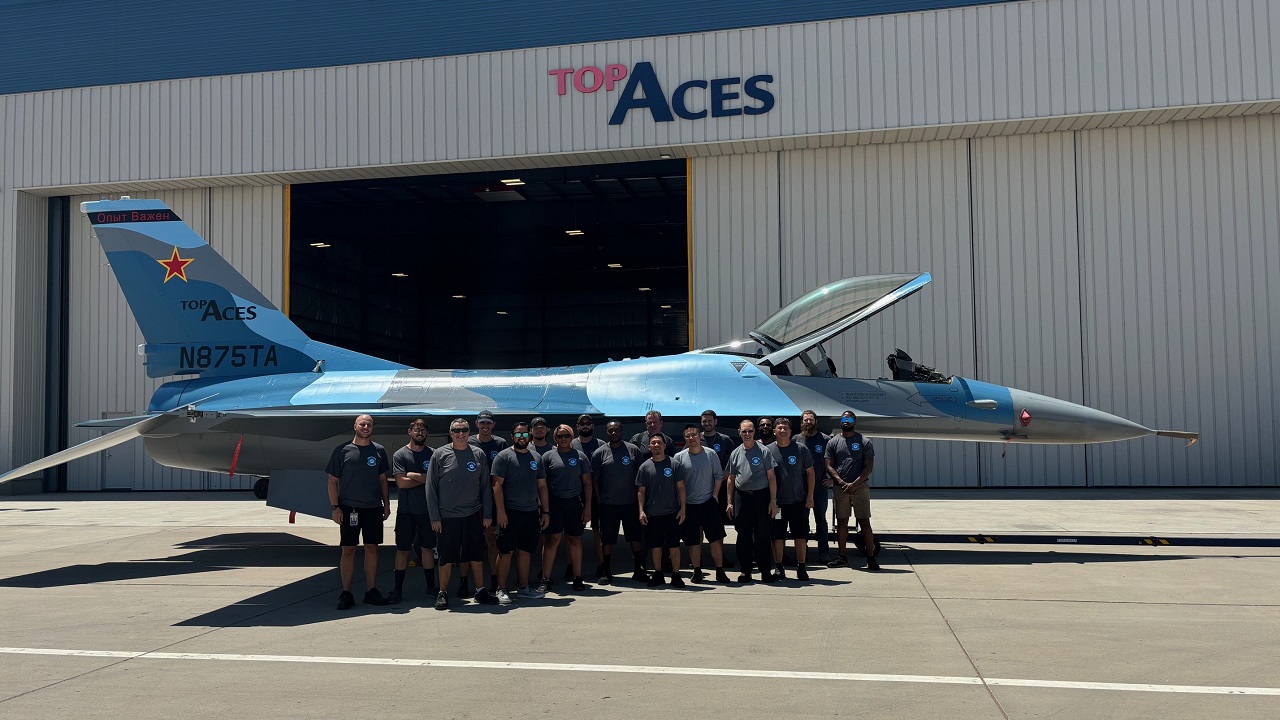
The Flanker Blue F-16 will join Top Aces’ fleet of former Israeli jets used to defend against enemy air attacks as part of U.S. Air Force training.
Top Aces has just unveiled its first F-16 in the “Flanker Blue” livery, which will join the fleet that provides adversary aircraft for training U.S. Air Force pilots. Top Aces Corp. is one of the companies awarded contracts under the Combat Air Forces (CAF)/Contracted Air Support (CAS) program to enhance the training of U.S. Air Force Formal Training Units (FTU) and increase the number of new pilots trained.
For this role, the company uses former Israeli F-16A Netz (Hawk), as they are known locally, which were retired from the Israeli Air Force in late 2016 and delivered to the United States in 2021. To date, Top Aces has maintained a paint scheme similar to that used by these aircraft during their service in Israel.
The new Flanker Blue paint scheme is inspired by the paint scheme used by some F-16s of the Air Force’s 64th Aggressor Squadron at Nellis Air Force Base in Nevada. It is unknown if Top Aces will replicate other paint schemes besides Flanker Blue.
Our #TopAces The Corp. team in Mesa, AZ is proud to present our first F-16 aircraft in the sleek “Flanker Blue” livery! N875TA will join our fleet of powerful F-16 aggressors and provide mission-critical training to the USAF’s 5th generation pilots.
Let us know your opinion! pic.twitter.com/f5m82CE805
— Top Aces (@topaces) 19 August 2024
F-16 of the top aces
Top Aces Corp. received the first four F-16 Fighting Falcons in 2021 from a total order of 29 aircraft purchased from the Israeli Air Force. The aircraft have been upgraded in Israel over the years, but it is not known in which configuration they were delivered. In any case, Top Aces later upgraded the aircraft before they entered service.
The aircraft are equipped with the Advanced Aggressor Mission System (AAMS) developed by Top Aces, which allows the F-16 to replicate any comparable fighter aircraft. In addition to the AAMS, the F-16s are equipped with Active Electronically Scanned Array (AESA) radars, Scorpion helmet-mounted displays, datalinks, electronic countermeasures, etc. The weapons are only simulated and the F-16s are always seen in flight in a clean configuration.
Checkout #TopAces while we perform air-to-air refueling with the #F35‘s of 33 Fighter Wing and 58FS at Eglin Air Force Base (@teameglin) during an ADAIR training mission!#F16 #AirtoAir #fuel #USA #FighterJet #fighterpilot #Pilot #pilottraining #Military #MilitaryTraining #ExperienceCounts pic.twitter.com/2gJ9oQyVI2
— Top Aces (@topaces) 13 August 2024
These capabilities, along with the F-16’s performance, will certainly be highly valued when it comes to simulating high-profile 4th and 5th generation threats that U.S. pilots may have to face in the future. Other private fighter aircraft currently available, such as the Mirage F1, F-5 Tiger, A-4 Skyhawk and Hawker Hunter, while heavily modernized in some areas, are still somewhat limited by their older aircraft and systems.
With the acquisition of the F-16, Top Aces became the first private operator to deploy 4th generation aircraft for contracted adversary air services. The company was first awarded a contract in 2019 to “provide full contracted air support services to realistic and challenging advanced adversary air and close air support threats” under the Combat Air Force/Contracted Air Support (CAF/CAS) program.
Later, in 2022, another contract was awarded to train pilots at Eglin and Luke Air Force Bases, with press releases specifically mentioning F-22 and F-35 pilots, among others.

Red air in the contract
In recent years, the privatization of military training has increased significantly. More and more private companies are offering “Red Air” adversary services, simulating enemy aircraft and tactics. The presence of the contracted Red Air is now an integral part of both daily training and major exercises.
The use of contracted “Red Air” services allows the Air Force to focus resources on other aspects of operations while maintaining a high level of training. Before the advent of these contracted services, squadrons typically had to commit aircraft and resources to also provide “red” aircraft during training missions.
The high quality of training is ensured by the fact that the contractors employ many experienced former military pilots who contribute their knowledge and expertise. Some of these pilots were also part of the Air Force and Navy aggressor squadrons, which have special training to imitate opponents.

